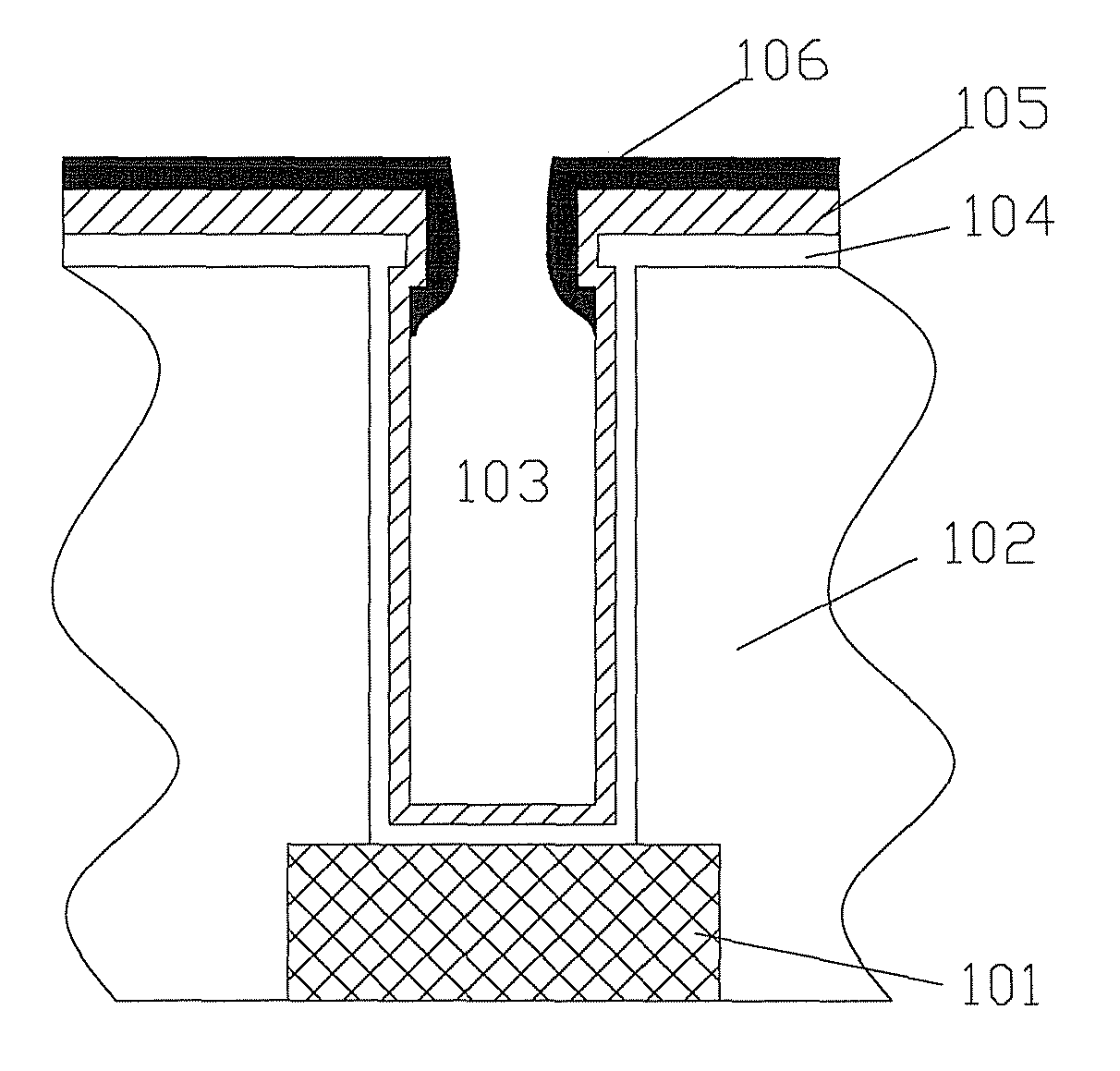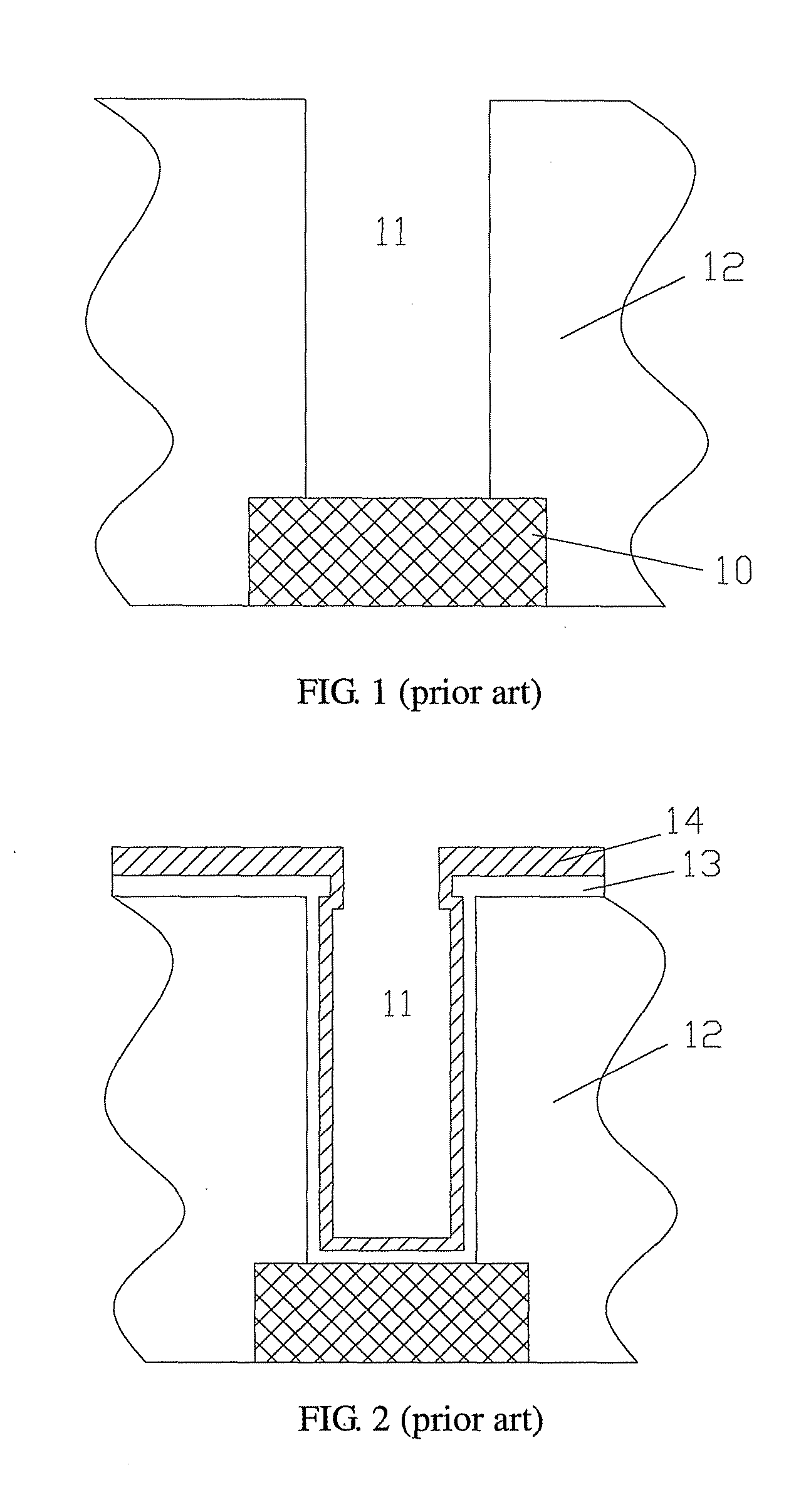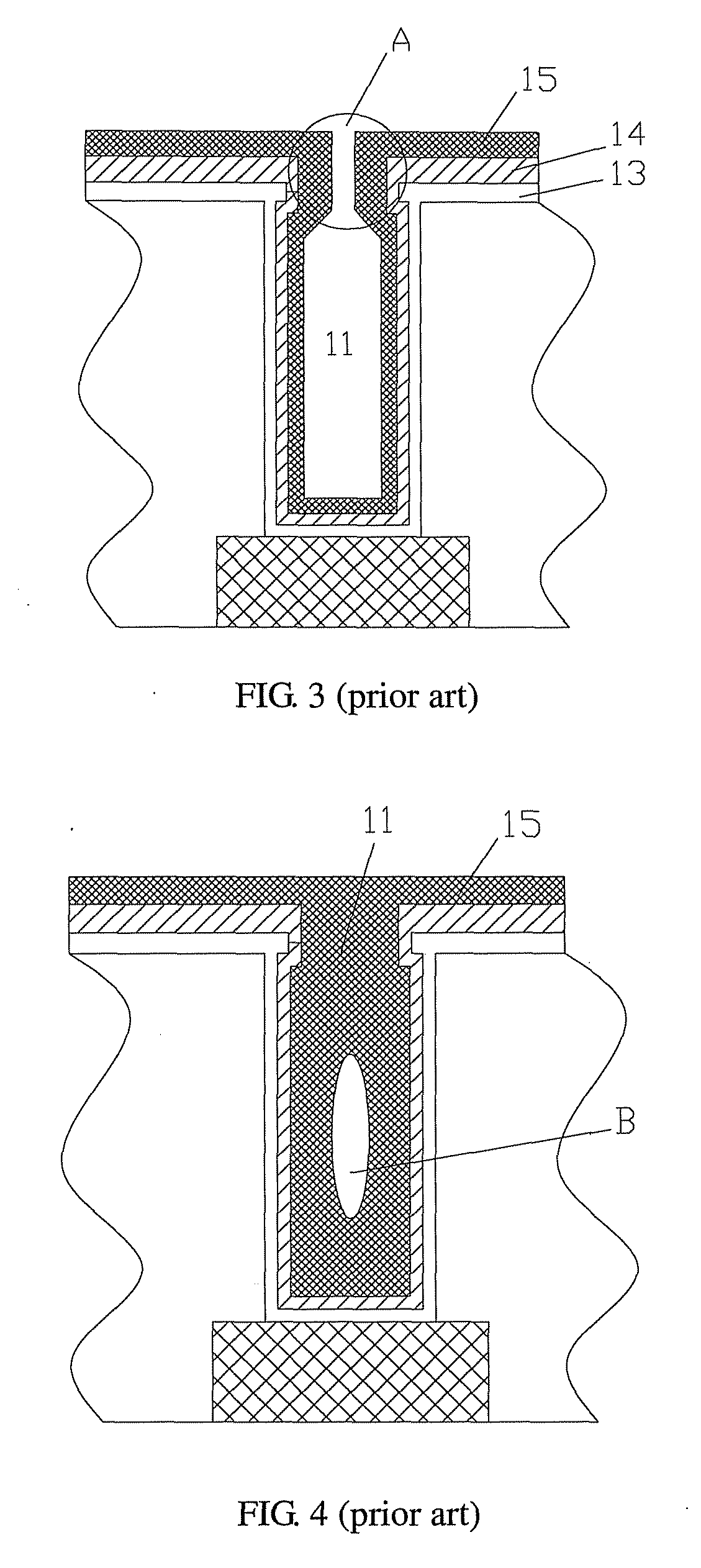Method for filling a gap
a gap and gap technology, applied in the field of semiconductor technology, can solve the problems of affecting the reliability of devices, more difficulty in filling structures by electroplating, and voids in filled through-holes, so as to reduce or eliminate the possibility of producing voids and increase the reliability of circuits
- Summary
- Abstract
- Description
- Claims
- Application Information
AI Technical Summary
Benefits of technology
Problems solved by technology
Method used
Image
Examples
embodiment 1
[0038]FIG. 5 is a schematic flow diagram of a method for filling a gap. FIG. 6 to FIG. 11 are structural diagrams schematically illustrating the method for filling the gap in the embodiment. In this embodiment, the through-hole between metal interconnect layers is filled, and therefore the through-hole is taken as an example of the gap.
[0039]As illustrated in the figures, the method for filling a gap includes the following steps.
[0040]In step S1, a semiconductor substrate is provided. Referring to FIG. 6, the semiconductor substrate comprises at least an underlying metal interconnect layer 101 and an upper insulating dielectric layer 102 on top of the underlying metal interconnect layer 101, wherein the insulating dielectric layer 102 has a gap 103. Here, the wording of “underlying” only indicates the relative position to the upper metal interconnect layer, and does not represent a first metal interconnect layer. The semiconductor substrate further includes logical devices, power de...
embodiment 2
[0061]FIG. 13 is a schematic structural diagram of a method for filling a gap according to a second embodiment of the present invention. The method for filling a gap includes:
[0062]providing a semiconductor substrate, which at least has an underlying metal interconnect layer and an upper insulating dielectric layer on the underlying metal interconnect layer, the insulating dielectric layer having a gap;
[0063]forming a diffusion barrier layer and a seed layer sequentially in the gap and on a surface of the insulating dielectric layer outside the gap;
[0064]forming a mask layer on a surface of the seed layer outside the gap;
[0065]depositing a metal layer on the semiconductor substrate with the mask layer, and the metal layer being filled in the gap; and
[0066]performing a planarization process to remove the metal layer, the seed layer and the diffusion barrier layer outside the gap so as to form a metal interconnect layer.
[0067]The difference between the above steps in this embodiment a...
PUM
| Property | Measurement | Unit |
|---|---|---|
| thickness | aaaaa | aaaaa |
| size | aaaaa | aaaaa |
| size | aaaaa | aaaaa |
Abstract
Description
Claims
Application Information
 Login to View More
Login to View More - R&D
- Intellectual Property
- Life Sciences
- Materials
- Tech Scout
- Unparalleled Data Quality
- Higher Quality Content
- 60% Fewer Hallucinations
Browse by: Latest US Patents, China's latest patents, Technical Efficacy Thesaurus, Application Domain, Technology Topic, Popular Technical Reports.
© 2025 PatSnap. All rights reserved.Legal|Privacy policy|Modern Slavery Act Transparency Statement|Sitemap|About US| Contact US: help@patsnap.com



